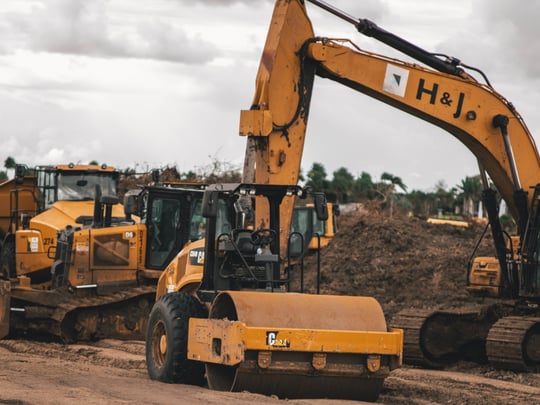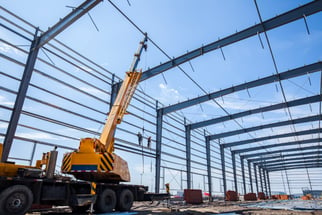Between global health crises, rising tariffs, and labor shortages, the construction industry is facing a challenging time. Employing technology to improve efficiency and increase productivity is a proactive way to counteract some of these difficulties. To that end, construction managers often find that the cost of implementing GPS technology is well worth the investment.
Increased costs, strained supply chains, and decreased demand
Analysts predict that a variety of factors will continue to strain the construction industry this year, including:
Labor shortages
Retiring baby boomers, lack of interest and training in younger generations, and a shortage of work during recent economic downturns have resulted in an increasing labor shortage for construction companies. Recent surveys show that over 80% of construction companies can’t find the workers they need.
Employing technology to improve efficiency and increase productivity is a proactive way to counteract some of these difficulties.
Decreasing backlog
While the construction industry backlog rebounded slightly to 7.3 months in December 2020, it still remains significantly behind 2019 numbers. Non-residential building is not expected to bounce back in coming months as companies continue to work from home and decrease commercial real estate holdings.
Price increases
Higher tariffs for steel and aluminum, and rapidly rising costs for lumber, are further challenging the industry just as it starts to see modest increases in demand in some sectors.
Supply chain issues
Viral strain and decreased shipping and air travel are adding to an already strained supply system, resulting in the need for redundant suppliers in various geographic locations.
Applying GPS technology solutions to overcome problems
GPS technology helps construction companies with more than just vehicle or equipment location. Applying GPS data reduces time spent managing people and assets, and allows managers to use their resources more efficiently to decrease costs and increase profits.
Applying GPS data reduces time spent managing people and assets, and allows managers to use their resources more efficiently to decrease costs and increase profits.
GPS builds stronger connections between the field and the office—keeping track of workers, making sure equipment stays functional, and quickly moving people and assets between sites to maximize the number of jobs completed simultaneously.
Back office and yard management tasks are simplified with automated data, freeing over-taxed employees to focus on other tasks when additional hires are hard to find. Driver safety reports help lower liability costs.
Geofencing alerts ensure that vehicles and equipment are used appropriately and protected from theft that can cost thousands of dollars and delay projects. Idling and hours of use data ensure optimal fuel savings and protect valuable equipment that can be costly to repair or replace.
As the construction industry faces ongoing obstacles, the application of GPS technology continues to be a cost-effective way to improve productivity, maximize work forces, and grow business efficiently.



